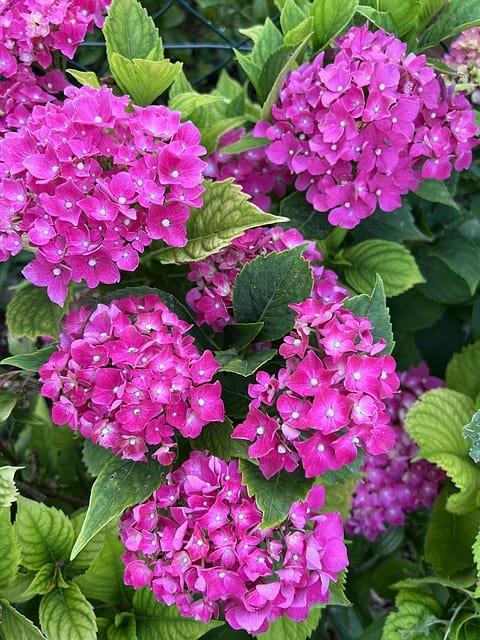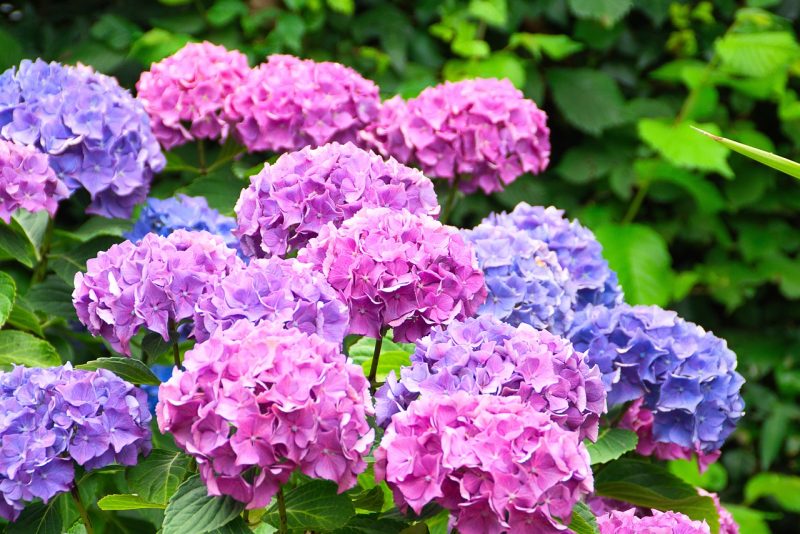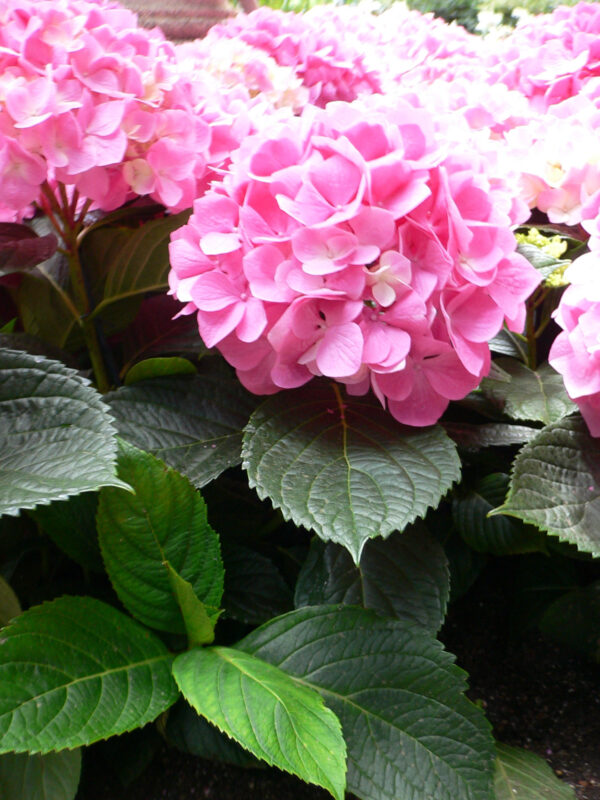Hydrangeas are among the most beloved flowering shrubs, known for their stunning blooms and versatility in the garden. Whether you have a sprawling estate or a cozy urban space, these flowering beauties can thrive and bring life to your landscape. However, timing is crucial when it comes to planting hydrangeas. Understanding the best times and processes will help ensure these stunning shrubs flourish for years to come.
When Is The Best Time To Plant Hydrangeas?

The ideal time to plant hydrangeas depends largely on your local climate and the specific variety of hydrangea. Generally, the best planting times are in early spring or fall, when the temperature is mild and rainfall is more consistent. Planting during these times allows hydrangeas to establish roots before the more extreme temperatures of summer or winter set in.
Early Spring vs. Fall Planting
Early Spring: Planting in early spring often provides the hydrangea with a chance to root into the soil before the intense heat of summer. In many climates, this timeframe aligns with the last frost date, offering your plants the best start.
Fall Planting: Fall can be a wonderful time as well, especially if you live in regions where winters are mild. This allows the plants to become established before cold weather. However, if you experience harsh winters, fall planting may not be ideal, as the plants may not have enough time to root before the ground freezes.
Best Time To Plant Hydrangeas By Zone

Planting times greatly vary across different USDA Hardiness Zones. Here’s a quick reference guide to help you determine when is the best time to plant hydrangeas in your area.
Zone 3: Late May to early June
Zone 4: Mid-May to early June
Zone 5: Late April to mid-May
Zone 6: Late March to early May
Zone 7: Mid-March to mid-April
Zone 8: February to March
Zone 9: January to February
Zone 10: December to January
This list provides an overview, but always consider local weather patterns and your specific microclimate for the most accurate planting schedule.
Calculate Your Optimal Planting Date
To figure out your personal optimal planting date for hydrangeas, consider several factors:
Frost Dates: Research the average last frost date for your area. Planting too early can expose young plants to frost damage, while planting too late can hinder root establishment before winter.
Current Weather: Take note of current temperatures. If it’s still quite chilly, you may need to wait to plant even if the calendar says it’s time.
Soil Preparation: Ensure that your garden bed is prepared well in advance. Good soil preparation can take time, so don’t delay your planting date if your soil needs amendments or if the bed needs to be cleared and tilled.
Hydrangea Type: Some hydrangea varieties may have slightly different requirements. For instance, panicle and smooth hydrangeas might be more forgiving of planting dates compared to macrophylla types, which often require more careful handling.
By carefully evaluating these factors, you can pinpoint the perfect time to plant hydrangeas and set them up for success.
Tips For Success When Planting Hydrangeas

While choosing the right time is essential, knowing specific tips and techniques can further ensure your hydrangeas thrive. Let’s explore some vital considerations.
Soil Temperature for Planting Hydrangeas: The temperature of the soil is a critical factor when planting hydrangeas. The soil should ideally be between 60°F (15°C) and 70°F (21°C). You can test this by inserting a soil thermometer about an inch below the surface. If the soil is too cold, the roots may struggle to develop, leading to stunted growth.
What Happens If You Plant Hydrangeas in Cold Soil?: Planting in excessively cold soil can cause roots to rot, delay growth, and leave plants vulnerable to diseases. When temperatures dip, hydrangeas may enter a state of shock, causing them to wilt or even die back. This is why checking the soil temperature before planting is crucial.
Days to Maturity
Hydrangeas don’t flower immediately upon planting; it may take a season or two for them to reach their fullest potential. The maturity period can vary with hydrangea types, with some blooming within a few months whereas others may take a couple of years. Keeping this in mind will help you have patience and manage your expectations as you wait for your beautiful blooms.
When to Plant Hydrangeas

Now that we’ve established key tips for success, let’s dive into specific questions about the timing and process.
What is the Best Month to Plant Hydrangeas?
The best month for planting hydrangeas largely hinges on your specific climate zone. In general, for those in southern and temperate climates, March or April is optimal for spring planting. For northern regions, late May through June will usually yield the best results.
When to Plant Hydrangea Seeds Outside?
Outdoor planting of hydrangea seeds is typically best done after there is no longer a risk of frost—usually in late spring. It’s vital to ensure the soil temperature has stabilized before doing this.
When is it Too Late to Plant Hydrangeas?
In many areas, planting hydrangeas past late summer can be risky. Once the heat of summer starts to cool down into fall, you need to consider whether the plants will establish roots before the ground freezes. Generally, late August or early September is the cutoff for many northern regions, while southern areas may have more leeway.
When to Plant Hydrangeas Indoors?
If you prefer to plant hydrangeas indoors, the best time to start is roughly 6–8 weeks before the last expected frost. Seedlings can be moved outdoors once they have developed a few true leaves and the danger of frost has passed.
How Long Does it Take Hydrangeas to Grow?
Hydrangeas can take anywhere from a single season to several years to achieve their mature height, depending on the variety and conditions. Fast-growing types, like the panicle hydrangea, can flower their first year planted under ideal conditions, while others may take longer.
Do Hydrangeas Like Sun or Shade?
Hydrangeas have differing sunlight needs depending on their variety. Most thrive in a location that receives morning sun and afternoon shade, whereas others may require more direct sunlight. Always check the specific needs of your hydrangea type to optimize their growth.
How Much Space Do Hydrangeas Need?
Hydrangeas also require adequate spacing, typically around 3–10 feet apart, depending on the variety’s mature size. Allowing enough space will enable good air circulation, which is critical to prevent diseases.
Will Hydrangeas Overwinter in the Garden and Come Up in the Spring?
Yes, most hydrangeas are hardy and can survive winter in the right zones. However, it depends on the variety — for instance, many macrophylla types may not withstand colder climates well. Mulching can provide added insulation.
How Long Do Hydrangeas Need to Grow?
On average, hydrangeas can take 2–3 years to fully mature and exhibit robust flowering. Variability will occur depending on specific hydrangea types and gardening conditions.
When to Plant Hydrangeas for Fall
If you opt for a fall planting, aim for a window from late summer to early fall—typically late August through September. Ensure you allow enough time for the plants to root before the onset of winter.
Is September Too Late to Plant Hydrangeas?
In many climates, September may be too late to plant hydrangeas, particularly in cooler regions. However, if you’re in a warmer area, early September could still be a viable option.





